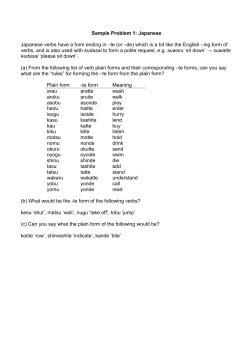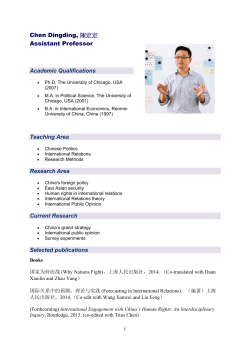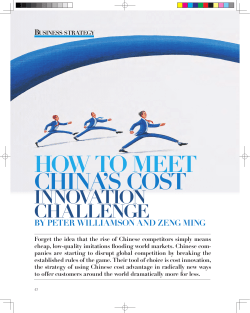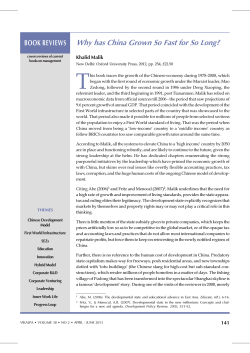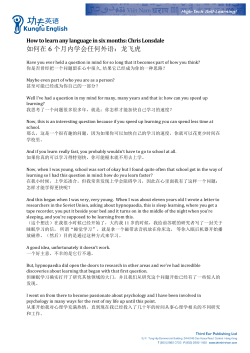
CHAPTER3 MEDICINALLY IMPORTANT MUSHROOMS
Fig. 2c L. edodes growing on sawdust logs chestnut, beech, oak, shia, alder etc. However, it has been grown artificially for centuries on cut logs which can support seasonal fruiting. In more recent times, mass cultivation has predominantly been achieved by the sawdust culture technology. In China it is known as Xiang gu (fragrant mushroom) and as Shiitake in Japan because of its historical association with the shia tree. This mushroom has been renowned in Japan and China for thousands of years both as a food and as a medicine. It has a most exotic and delicious taste and is a central part of many Oriental dishes and is increasingly being adopted in the West. There is little difference in flavour or mouth feel between mushrooms cultured on logs and those found in the wild on tree stumps or dead trees. However, sawdust cultured mushrooms now being marketed worldwide are considered to be soft in texture and 34 less flavoursome. It is undoubtedly the leading mushroom worldwide that can be used both as a nutritious and tasty food and a highly effective medicine. In Oriental medicine it has been used for a wide range of health problems and its curative properties are well attested to in folk medicine (Hobbs, 1995). It has been particularly valuable in treating high blood pressure and lowering blood cholesterol. The fungus is the source of two well-studied polysaccharide preparations, viz. Lentinan – a cell wall polysaccharide extractable from both the fruit-body and mycelium, and LEM – a protein-bound polysaccharide derived only from the mycelium (Chihara, 1992). Both compounds have demonstrated anticancer activity. It is believed that such compounds function by enhancing the immune system rather than attacking the cancer cells directly. Such compounds are increasingly used in Japan as adjuvants to help support immune function in cancer patients during radio- and chemotherapy and can prolong survival times in some types of cancer (Mizuno, 1995). An immense literature has been, and continues to be, accumulated on these compounds mostly in the Orient but increasingly so in Western scientific and medical journals. Areas of study that will be expanded on in later Chapters will include anticancer effects, immune regulatory effects, antiviral effects, bacterial and parasitic infections, hepatoprotective and cardiovascular effects. Commercial preparations are available as tablets, capsules, or elixirs, and are extensively on sale in most Oriental countries, and increasingly in the USA and Europe, in natural food/medicine markets. Shiitake extracts more often appear in mixtures blended with Reishi, Maitake and others. Key active constituents Beta-D-glucan (Lentinan) and heteroglucan-protein (LEM) (anti-tumour, immunostimulating) 35 Eritadenine (cholesterol-reducing) Ergosterol (provitamin D-2) RNA fractions (antiviral nucleic acids) Phellinus linteus Fig. 3 Phellinus sp. growing naturally on deciduous tree The fruiting-bodies of this fungus are called ‘song gen’ in Chinese medicine and ‘meshimakobu’ in Japanese. The fungus grows as a parasite mostly on living deciduous trees (but occasionally on Pinus spp.) in Japan and Korea but also in 36 other parts of the world (Teng, 1996). The fungus can now be cultured by log and sawdust technology. However, extensive studies are underway for mycelium culture in fermentors. In traditional Chinese medicine hot water extracts of the inedible fruit-bodies have been used for an extensive range of ailments and it is believed to work as a ‘miracle medicine’ refreshing the human body and prolonging longevity (Ying et al., 1987). Recent studies have compared hot water extracts of Phellinus with the other main anticancer medicinal mushrooms when tested against xenographs. The Phellinus extract showed the strongest evidence of tumour proliferation suppression (Mizuno, 2000). It has been extensively studied for effects on digestive system cancers, e.g. gastric, duodenal, colon and rectal and also liver cancer. Special attention has been given to the beneficial effects of such extracts before and after cancer operations or in the adjuvant setting (Aziawa, 1998; Mizuno, 2000). In recent years, using cultured mycelium of selected strains of Phellinus, compounds have been extracted and used in Korea as medicinals – especially for cancer treatment. This resulted from a national project between laboratories in the National Universities and several Pharmaceutical Companies, and the medicinal products now being manufactured by Korean New Pharmaceutical Co. There are a large number of Korean patents on the manufacture of such medicinal products (see Mizuno, 2000). Products as dietary supplements are expected shortly to enter the Japanese health food market. The medicinal attributes of this fungus will merit close attention in the future (Mizuno, 2000). Key active constituents Beta-glucans (anti-tumour and immunostimulating) Marketed as Meshima capsules 37 Poria cocos Fig. 4 Poria cocos sclerotium at base of tree This fungus, sometimes referred to as Wolfiporia cocos, is the most commonly used of all Chinese medicinal fungi. It is called Hoeleu or Fu Ling in Chinese which refers to the hard sclerotium of the fungus. This is a mycorrhizal fungus growing in association with the roots of various conifers, especially Chinese red pine. Large tuberculiform structures – the sclerotia – are formed underground and can be collected all year round but especially early autumn (Liu and Bau, 1980). Apart from the medicinal uses, the large sclerotial structures have been used as food in Nigeria and in parts of Eastern and Southern US – “Indian bread”. Pharmacologically, the polysaccharides – spachyman and pachymaran exhibit strong anti-cancer and immunomodulatory activities. Low-molecular weight tetracyclic triterpenes have considerable immunostimulating and antiviral activities (Hobbs, 1995). The extensive range of traditional medicinal uses are documented in 38 Hobbs (1995) and Ying et al. (1987). The main clinical trials have been concerned with the treatment of viral hepatitis in which Poria was one of several herbal ingredients. Hoeleu is widely available in Chinese herbal shops in bulk, and is also included in many commercial preparations. Key active constituents Polysaccharides – spachyman and packymaran (anti-tumour and immunomodulating) Tetracyclic triterpenes (immunomodulation and antiviral) Auricularia auricula Fig. 5 Auricularia auricula growing on fallen timber This fungus is widely known as Jew’s ear (a contraction of Judas’ ear), wooden ear, or tree ear and in Japan, Kikurage. They are facultative parasites growing on trunks of many broadleaf trees or on dead wood (Hobbs, 1995). The fruiting body is gelatinous, elastic, rubber in texture and widely used in Chinese cuisine. However, it is an acquired taste! It is widespread in United States, Europe 39 and Asia. Historically, it has been used in China both as a food and medicine. It is particularly useful for stopping pain and bleeding, and is regularly prescribed in traditional Chinese medicine to treat haemorrhoids and excessive uterine bleeding (Ying et al., 1987). Kikurage has a high content of undigestible polysaccharides or dietary fiber. Pharmacologically, the polysaccharides have been used as immune toxins, anticoagulants and to lower cholesterol. Extracts of Auricularia prevent egg implantation in animals terminating early and mid-pregnancy (He and Chen, 1991). Owing to this possible teratogenicity, it is recommended that Auricularia extracts should not be taken by pregnant or lactating women and those planning to conceive. This is believed to be one of the first mushrooms to be artificially cultivated in China. Now extensively cultivated in Asia for culinary and medicinal purposes. As yet there is no cultivation practice on the West. Key active constituents Polysaccharides (immune stimulation, anticoagulant, lowering cholesterol). 40 Hericium erinaceus Fig. 6 Hericium erinaceus growing on fallen log This is an edible mushroom occurring widely in Japan and China, growing on standing and decayed broadleaf trees such as oak, walnut and beech. It can also cause heart rot in standing trees. Originally collected from the wild, it is now extensively grown artificially on logs and sawdust mixtures making this mushroom available all the year round. It is known in the West as the hedgehog or monkey head fungus and in China as Shishigashida because the fruiting body looks like the head of a lion. When air dried and extracted with hot water it is used extensively in traditional Chinese medicine (Houtou), to promote digestion and general vigour, strength and general nutrition. The polysaccharide from this mushroom have cytostatic effects on gastric, oesophageal, hepatic and skin cancers (Mizuno, 1999; 41 Mizuno et al., 1992). Mycelium produced from several Hericium spp. and then extracted with hot water formed the basis of a sports drink named Houtou that was used in the 11th Asia Sports Festival (1990) and is believed to have contributed to the remarkable activities of Chinese players!! It is anticipated that this mushroom will become an important component in future health foods. Key active constituents Beta-D-glucans (antitumour) Ergosterol (provitamin D) Cyathane derivatives (nerve growth stimulators) Grifola frondosa This fungus forms large fan-shaped mushroom heads that often fuse together in masses at the base or on the roots of broadleaf trees. It can invade the core of the tree as a parasite causing extensive decay. It is often called ‘Hen of the Woods’ or ‘Sheep’s Head’ while it is more often called in Japan, Maitake, which mean ‘dancing nymph’. In the early stages it is sought after for its delicious taste and excellent aroma. Previously, it was only collected from the wild and, consequently, was highly prized and priced. Since the late 1970s, it can be artificially cultivated on logs or sawdust mixtures and now many thousands of tons are being grown in Asia and more recently USA (Chen, 1999). In traditional Chinese medicine it has been used for improving spleen and stomach ailments, calming nerves and treating haemorrhoids (Hobbs, 1995). Maitake is a component of a wide range of Chinese medicines. 42 Fig. 7a Grifola frondosa growing naturally at base of tree. Fig. 7b G. frondosa growing on sawdust mixture 43
© Copyright 2025


